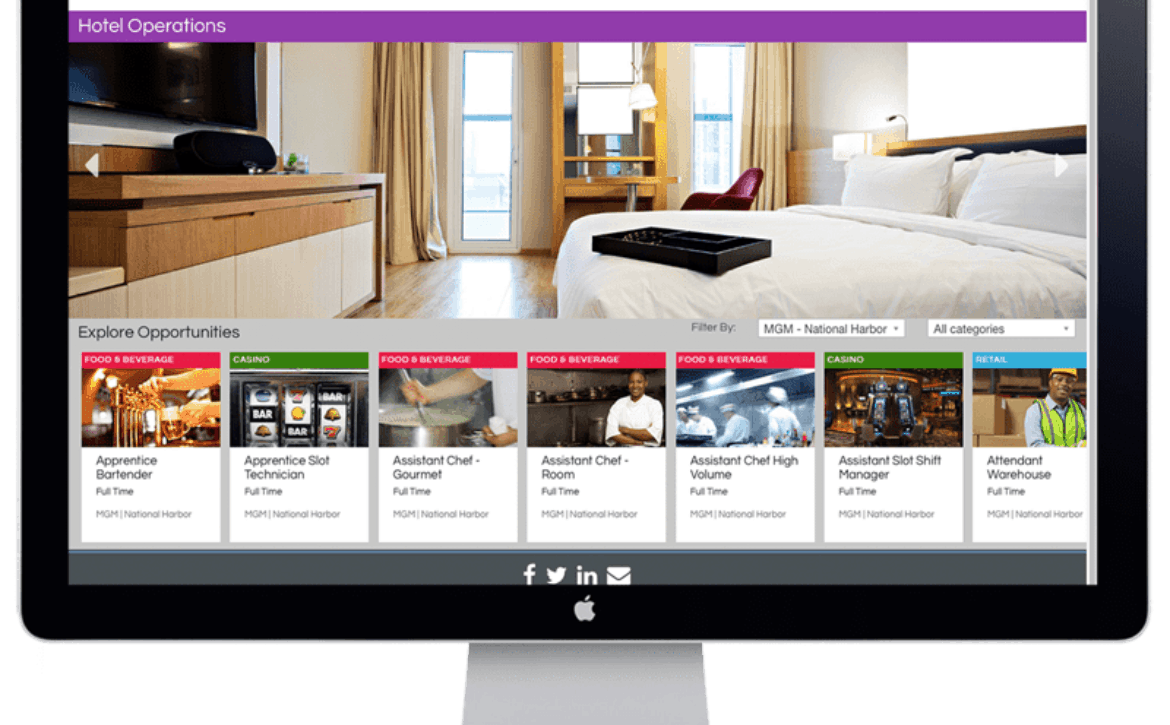
One startup is developing a solution to help job seekers match skills and potential to jobs
By Roy Maurer, SHRM.org
The U.S. Bureau of Labor Statistics reported a record high 5.9 million job openings this month, while roughly 8 million Americans are being counted as unemployed and about one-third of employers consistently say that they can’t find the workers they need.
It is striking evidence of the oft-mentioned skills gap—the disparity between what skills employers say they need and the skills job seekers have. Understanding the skills gap is complicated and the solutions are multiform, including educating more people in the skills needed for high-demand fields, implementing more employer training programs and easing up on requirements for open positions.
We’ve realized that national policy solutions are important, but the local business in Massachusetts that can’t find the talent they need to fill a manufacturing contract, that’s the real problem. The skills gap needs to be reduced in the area of aligning skills for particular workforces to meet particular demand.
SHRM Online talked with Mike Knapp and Jason Green, the co-founders of the job placement platform SkillSmart, about their collaborative, community-focused approach to connecting employers, job seekers and educational partners to help close identified skills gaps.
Knapp has more than 20 years of experience in technology, public policy and local government, recently serving on the Montgomery County Council in Maryland, where he worked to create a pipeline of skilled workers that matched the needs of local and regional employers.
Green most recently served at the White House advising President Barack Obama on workforce development policy, among other areas.
SHRM Online: We’ve been talking about the skills gap between employers and job seekers for a while now. Is it closing at all?
Green: For so long there was a question of “Is there a skills gap?” Some would say “No, there’s clearly enough supply to meet demand, but the labor force may be in Arizona when it’s needed in New England.” Well, that’s a skills gap. We’ve realized that national policy solutions are important, but the local business in Massachusetts that can’t find the talent they need to fill a manufacturing contract, that’s the real problem. The skills gap needs to be reduced in the area of aligning skills for particular workforces to meet particular demand.
Knapp: There are examples where the pain point is so significant that specific organizations have figured out a way to close that gap, but those are individual cases. I don’t think you can say that the needle has been moved on a national scale. Skills gaps are evident in sectors such as oil and gas, manufacturing, and construction because you have older workers retiring and a whole cohort of people—Generation X and Millennials—who never entered those industries. So how do you train the next generation to recognize where those opportunities are? Those are the challenges out there. I don’t know if it falls under the traditional definition of the skills gap, but it’s a real thing that companies will face and individuals will have an opportunity to take advantage of if they can find the right pathway.
I was walking the exhibit floor of the SHRM Annual Conference [in June 2016] and listening to people talk about solving the hiring problem. “You need more resumes.” “You need more clickthroughs.” “You need to be able to post your jobs everywhere.” The expectation is that if you comb through more candidates, presumably someone in there is the right fit. People have fallen into that mindset. But what if we did a better job of articulating the skills needed and raked in fewer—but better—candidates? Instead of wading through thousands of resumes to get to a manageable number, why not focus on getting to the manageable number first by being able to see people with a majority of the required skills right from the get-go?
SHRM Online: Where does SkillSmart fit into the workforce development ecosystem?
Knapp: Right in the middle, between employers, job seekers and educational institutions. We saw the opportunity to create a platform that allows those entities to really engage with each other, input their information, and increase the level of transparency and communication in the process. Whether it’s working within a local community or an industry sector, we can provide a place that allows an employer to identify the skills it is seeking for a position. The job seeker can then find out which skills are needed for that position. Maybe they only possess four out of 11 required skills, but they now know what those skills are. Then we link them to where they can acquire those additional skills, whether it’s an experiential or learning opportunity. And their progress can be tracked and measured.
Whether it’s working within a local community or an industry sector, we can provide a place that allows an employer to identify the skills it is seeking for a position. The job seeker can then find out which skills are needed for that position.
Green: Undergirding all of that is good data. The public workforce development system needs better data. Workforce training providers want to make sure that the training being offered is actually going to meet the needs of employers. Once we know the skills that are needed by local employers and the skills that are lacking in the local workforce, employers or community colleges can design a boot camp, for example, to teach those skills. The job seeker, employer and educator all get something more relevant. As a result of sitting in the middle and connecting the dots, you now have a better outcome for all three stakeholders.
SHRM Online: How does SkillSmart work?
Green: Step one is understanding what’s required. Employers’ job postings are broken down into skills to be immediately relatable to job seekers. From the job seeker’s perspective, it is intended to be a place to go and understand exactly what prerequisites and skills are needed for a certain job. For example, it could be a GED [certificate], a CDL [commercial driver’s license] and six identified skills.
Step two gives the job seekers the ability to advertise themselves. They fill out a profile that isn’t limited to past employment or where they went to school. The profile shows where they demonstrated certain skill sets like teamwork or leadership or customer service. It could come from work experience, the military or in a volunteer capacity. Job seekers’ skills information is aggregated and calibrated into a score for each open position. Employers see the score and can easily see who matches to the job best.
The third step is after [a job seeker comes] up short for a particular role, feedback is provided. Without feedback, you don’t know if the reason you weren’t called back is because you weren’t qualified or that they never even looked at your resume. The platform shows job seekers the skills that their experience supports and doesn’t support, and the courses that local education partners provide. We work with Northern Virginia Community College and Prince George’s Community College in the Washington, D.C., area, for example, to break down their courses into skills outcomes and develop lean-learning educational opportunities.
Read the Article Download the Tear Sheet
Learn More New Workforce Development Contract is with the Chesapeake Regional Tech Council to Support Regional Tech and Cybersecurity Staffing
New Workforce Development Contract is with the Chesapeake Regional Tech Council to Support Regional Tech and Cybersecurity Staffing



 SkillSmart Joins White House Call to Action for Private Sector Engagement on Global Refugee Crisis
SkillSmart Joins White House Call to Action for Private Sector Engagement on Global Refugee Crisis




 by
by 








